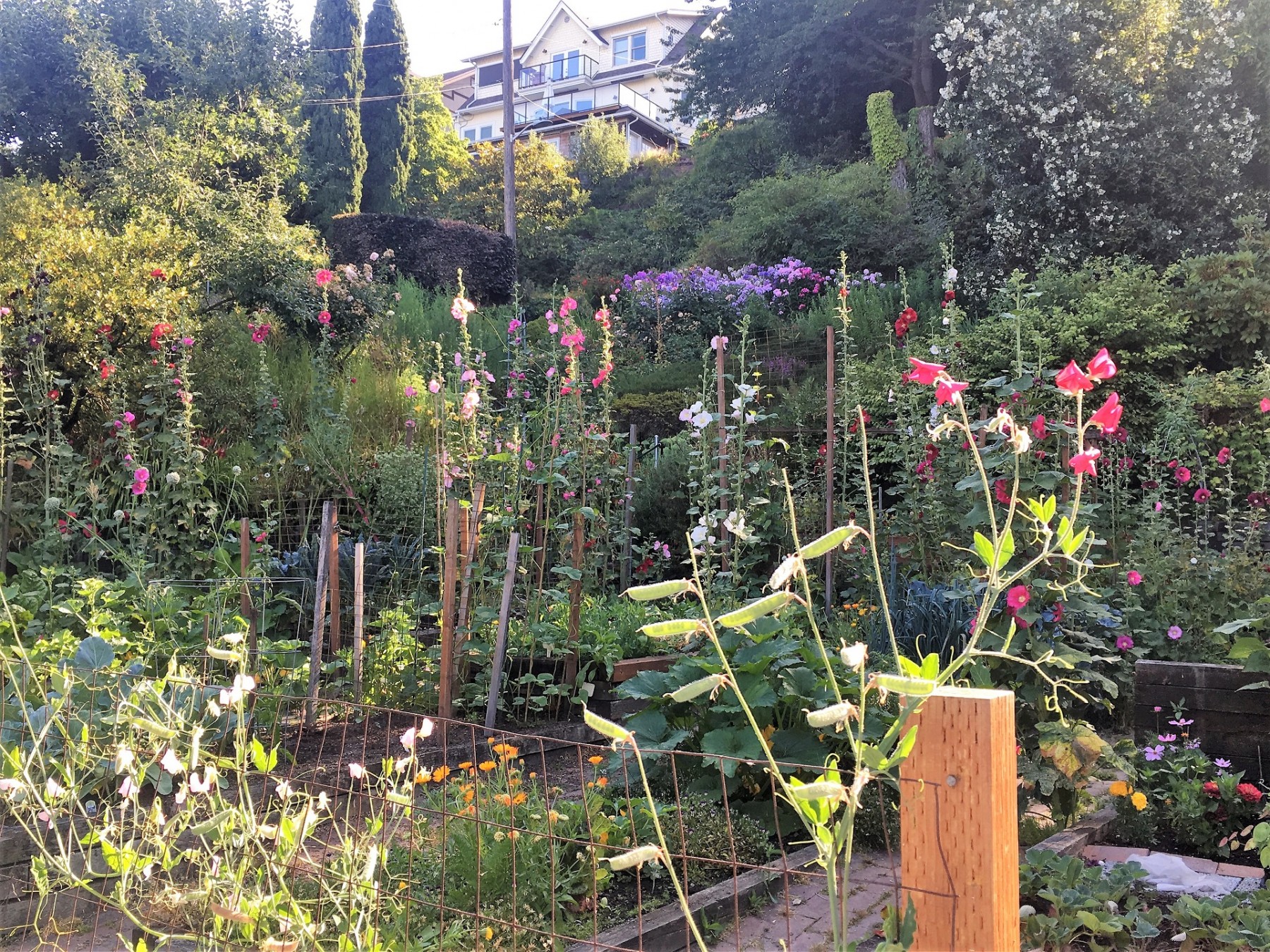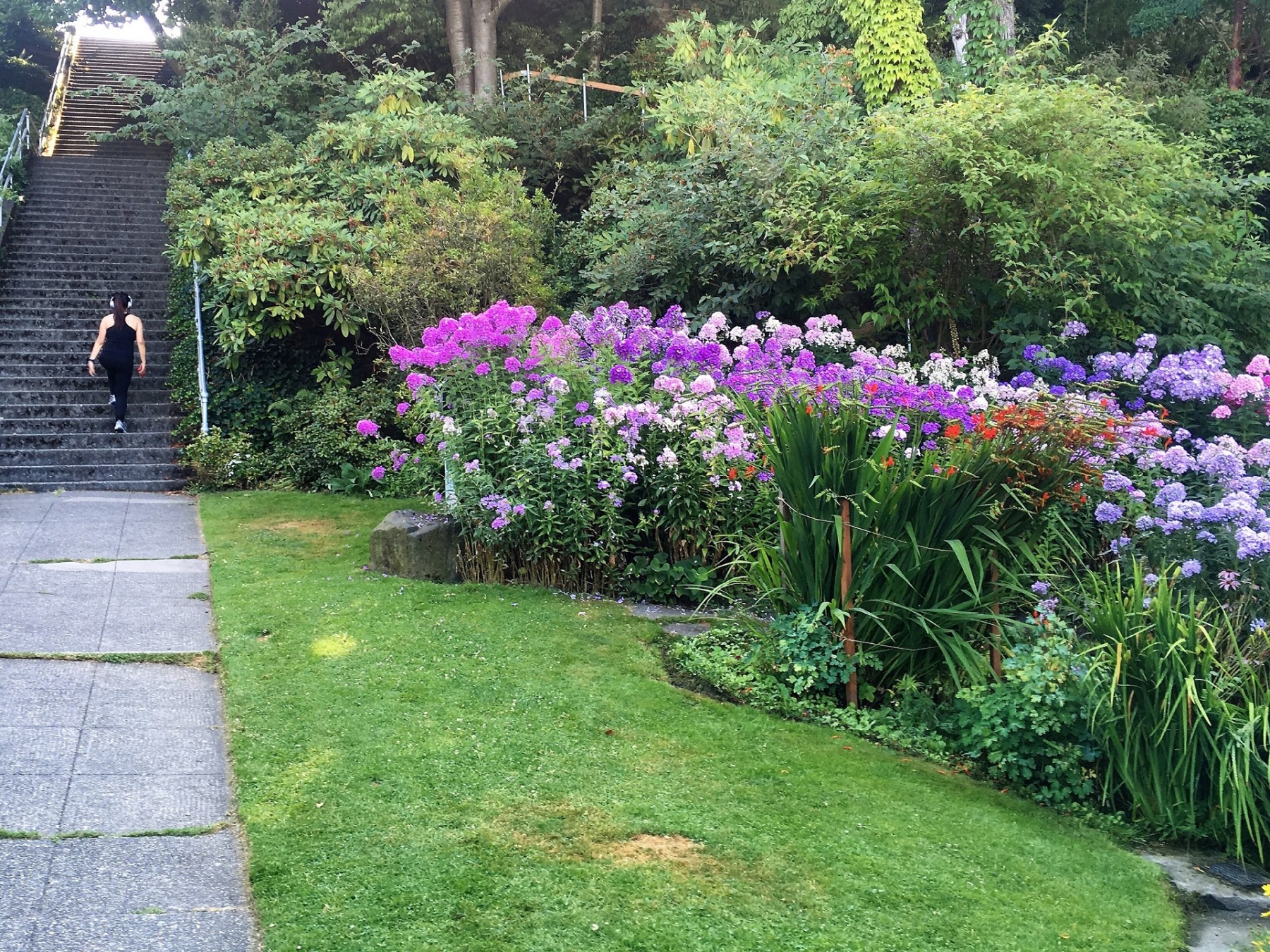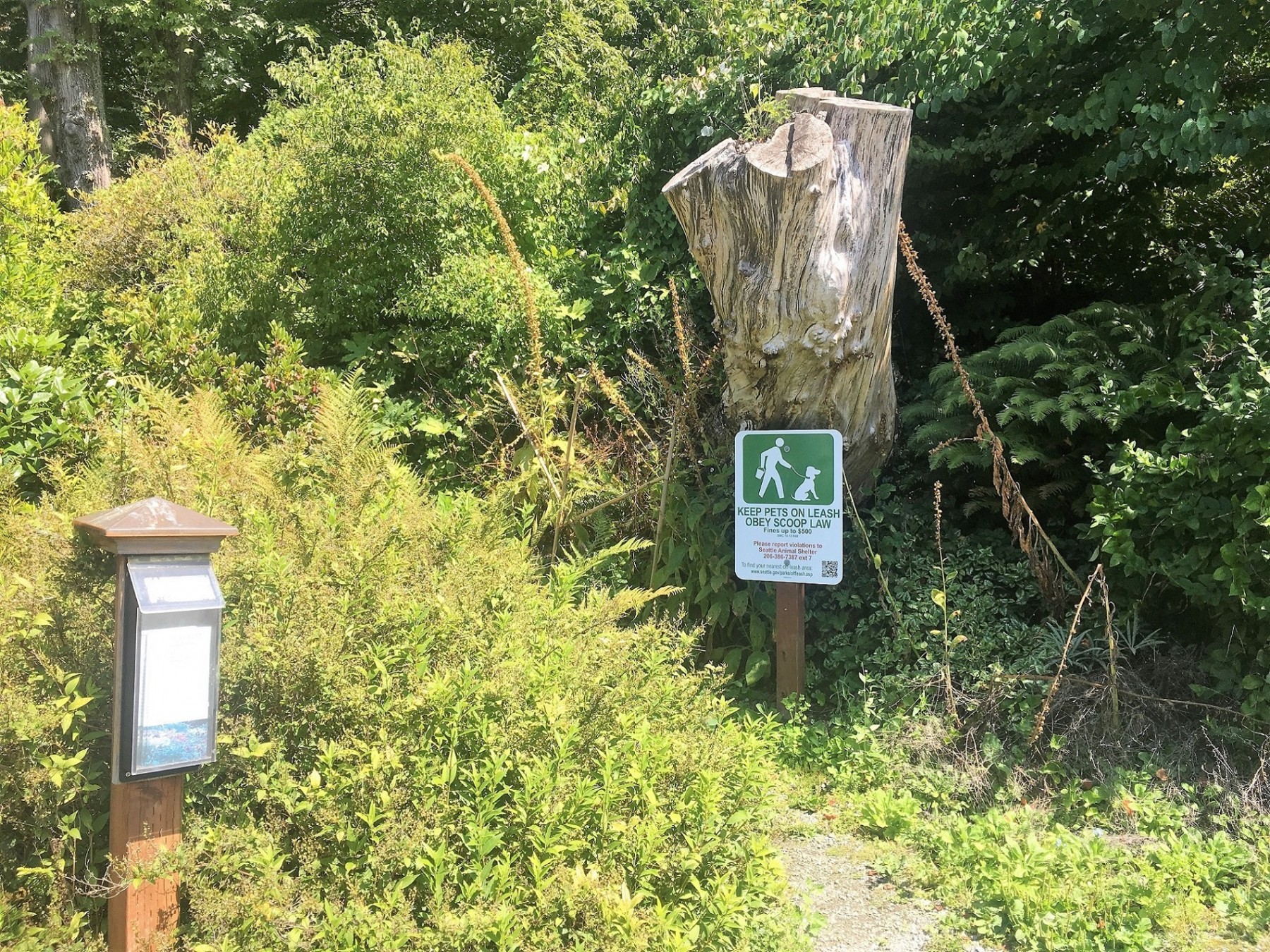
This month I’m looking at what can happen when private gardeners take their passion public. Streissguth Gardens is a private/public enterprise that could be duplicated in neighborhoods all over the country.
Recently, I went for an urban hike with friends on the east side of Seattle’s Lake Union. On Blaine Street, we arrived at a place where 293 steps climb the escarpment in back of the lake. Halfway up, I saw what I thought was a private garden, loaded with choice trees and flowering plants.
I was delighted to discover it was a public park. Streissguth Gardens had a kiosk offering a map of trails that traversed the vertiginous hillside. We started up one path, and down another, stopping to admire specimens and using a plant ID app to identify those we didn’t know.

Not your average city park. This one was wild and wooly, the footing uncertain in places. I was reminded of my childhood spent exploring the woods near my home, never sure what would be around the next bend. By the street at the bottom of the garden, sumptuous vegetables were planted in the flattest area, inviting those who might be discouraged by the climb to still enjoy the beauty. Behind the vegetables, the most protected spot acted like a winter greenhouse. Clearly, this garden featured personal choices made by true plant lovers. On the map, the trails had names like “Cynthia’s Path,” “Raccoon Pool Path,” and even “Precipice Path.” It was a delight.

The park began as a private space in 1972 when Ann and Dan Streissguth bought two hillside lots to make a garden south of their Blaine Street home. In 1996, Seattle Parks and Recreation bought three more nearby lots for their open space program. The couple donated their garden, with the proviso that they and their son Ben could continue to work with the land. Volunteers have also given countless hours on the hillside. The city supplies summer water. In 2007, the Streissguths started an endowment to help fund the future gardens and restore native habitat.
This kind of generosity can be replicated. For more information and ideas, go to www.streissguthgardens.com or pick up their book, In Love with a Hillside Garden. Perhaps you and your neighbors could pool resources to buy a vacant lot, and then work with city officials to foster the idea of creating a different public space, beyond the traditional urban park. This would allow more flowers, more native plants, more unusual trees that support a wider diversity of plant and animal life for everyone to enjoy.


